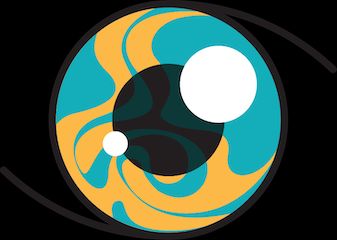Red bumps on your legs may be caused by allergies, insect bites, skin conditions, or a more serious underlying condition. On dark skin tones, bumps may appear violet or gray and be harder to see.
In most instances, there’s no need to panic if you see red bumps on your legs. While they may be itchy and annoying, they are typically not a cause for concern.
However, skin conditions do carry the risk of becoming more serious infections. It’s important to treat your rash as a healthcare professional recommends and keep an eye out for symptoms of infection, such as pain, fever, or swelling around the bumps.
The chart below summarizes some of the most common causes of red bumps on your legs.
| If the red bumps: | Then they may be: |
|---|---|
| do not itch or itch very little | keratosis pilaris |
| go away without treatment | folliculitis or hives |
| blister and ooze a clear fluid | eczema |
| turn white when you press them | hives |
| itch a lot | insect bites or eczema |
| have a scaly quality | eczema or psoriasis |
| are accompanied by night sweats and weight loss | vasculitis |
| are shiny and resemble open sores | skin cancer |
Read on to learn more about each cause, what it may look like on different skin tones, and how to treat the bumps.
The following are images of conditions that may cause red bumps on the legs in different skin tones.
Keratosis pilaris can look like small red or dark bumps that resemble goosebumps on the fleshier areas of your thighs and arms. In most cases, they won’t feel itchy.
Research indicates that keratosis pilaris is a common condition that affects about
These bumps may appear a few shades deeper than your skin tone if you have dark skin.
Learn more about treatment for keratosis pilaris.
Folliculitis is typically caused by an infection in the hair follicles of the scalp or on areas of the body that have been shaved. The condition is mostly caused by staph bacteria (Staphylococcus aureus). Folliculitis can also be caused by inflammation from ingrown hairs, viruses, or fungi.
Folliculitis results in small bumps or pimples on the skin, which is commonly known as “razor burn” or “razor rash.” The bumps may appear red on light skin tones and the shade of your skin tone or a deeper shade if you have dark skin.
Shaving, tight clothing, and combining heat and sweat are common causes of folliculitis.
Learn more about treatment for folliculitis.
If the red bumps combine in patches and itch, you may have eczema. Eczema can also appear dark brown, purple, or ashen gray on dark skin tones.
Eczema, or atopic dermatitis, is a common skin condition. It may be dry and scaly, or it can blister and ooze a clear fluid. Eczema
Research highlighted in a 2019 study details that people of all ages can have eczema, but 85% to 95% of eczema diagnoses begin in children under 5 years old.
Learn more about treatment for eczema.
Hives, clinically known as “urticaria,” are raised, itchy, red, or skin-tone welts. They turn white when you press their center. Hives can appear anywhere on the body, and people of all ages can get them.
Hives are usually similar in color to your skin tone. Sometimes they may be slightly lighter or darker, depending on what’s causing them. Because of their common lack of pigment, hives on dark skin can be more difficult to identify.
Hives can be triggered by things such as pollen or insect bites and even some medications.
Learn more about treatment for hives.
Your little red bumps may be insect bites, especially if they’re very itchy. Insect bites on dark skin tones may appear purple or dark brown.
Common culprits include:
Learn more about how to treat insect bites.
Psoriasis is a chronic condition that causes scaly patches to appear on the skin. It may appear red on light skin tones and violet or gray on dark skin tones.
Certain forms of psoriasis, such as guttate psoriasis, may also cause small-scale-like spots to appear on the skin.
Triggers or risk factors for guttate psoriasis include:
- tonsillitis
- strep throat
- skin injury
- stress
- some medications
Learn more about treatment for psoriasis.
There are several different types of skin cancer. These include basal cell carcinoma (BCC) and Bowen’s disease. Skin cancer is typically caused by unprotected, consistent exposure to the sun.
Basal cell carcinoma (BCC)
The Skin Cancer Foundation reports that BCC is the most common form of skin cancer. BCCs are abnormal growths that form in the skin’s basal cell layer. They often appear as small, shiny red bumps, and they can look like an open sore. They may also appear as brown or glossy black bumps on dark skin tones.
Bowen’s disease
Bowen’s disease is an early form of skin cancer. It appears on the surface of the skin and is also referred to as “squamous cell carcinoma in situ.” Bowen’s disease may appear as a scaly patch, which may ooze, crust over, or itch.
Learn more about treatment for skin cancer.
Vasculitis is a condition that causes inflammation of the blood vessels. This decrease in the flow of blood results in a wide range of symptoms.
There are many types of vasculitis, most of which are rare. Some of the types, including hypersensitivity vasculitis and Kawasaki disease, have red, purple, or dark bumps as a symptom.
What STI causes bumps on thighs?
The molluscum contagiosum is an STI that can cause bumps on the thighs and other areas of your skin. It can spread through skin-to-skin contact, including during sex.
What are the little red bumps on my legs that look like pimples?
You can experience little red bumps on your legs that look like pimples after shaving. This may indicate razor burn, which is a form of folliculitis.
What does a stress rash look like on the legs?
Stress can trigger eczema or psoriasis. Both skin conditions can appear on the body as patches that may be red, purple, dark brown, or gray.
The presence of little red bumps on your legs isn’t necessarily a matter of concern. If you experience itching or discomfort, a healthcare professional can help identify the cause and recommend the best treatment.
Bumps may be harder to see on dark skin tones and can appear purple, gray, or darker than the skin tone.
Skin conditions do carry the risk of becoming more serious infections. It’s important to treat your rash as a healthcare professional recommends and keep an eye out for symptoms of infection, such as pain, fever, or swelling around the bumps.









